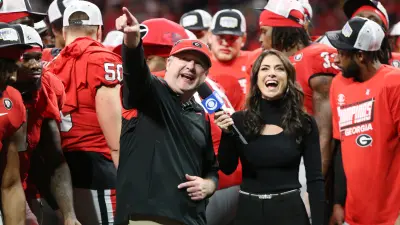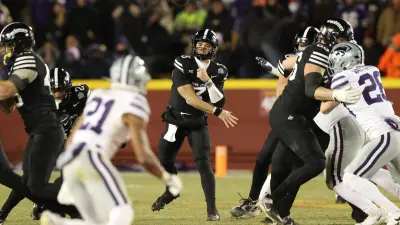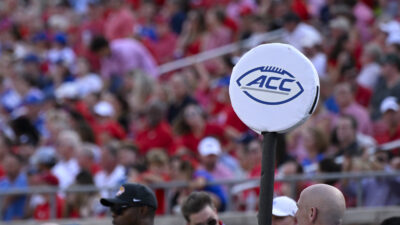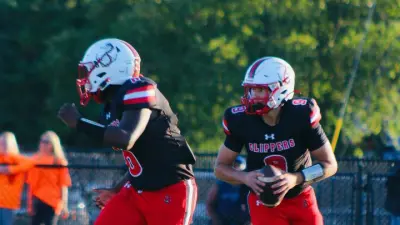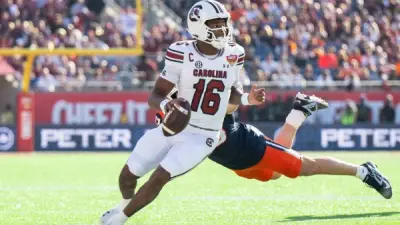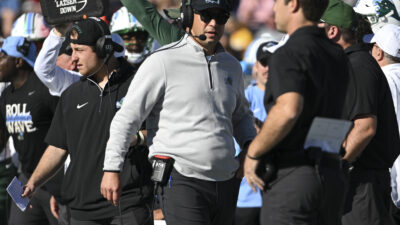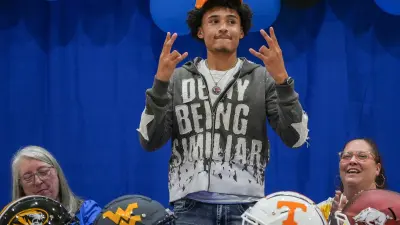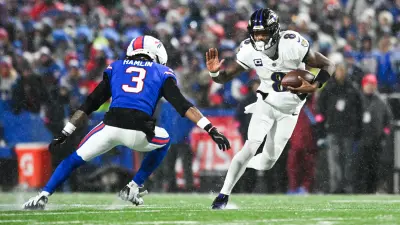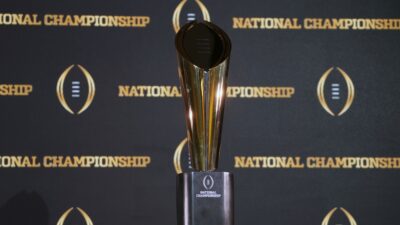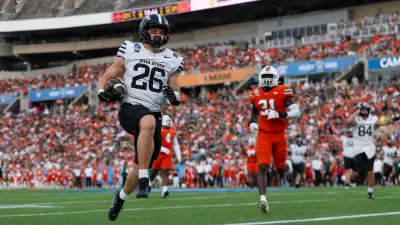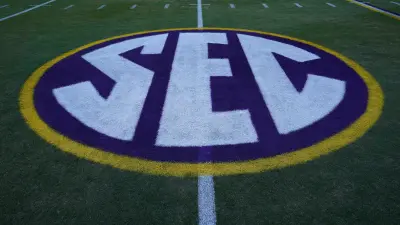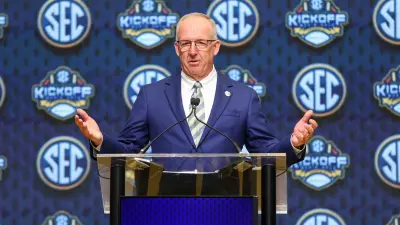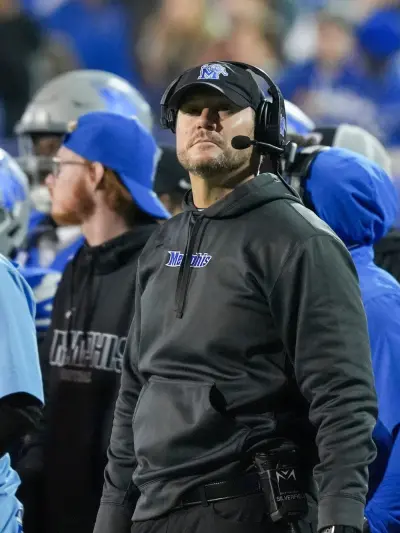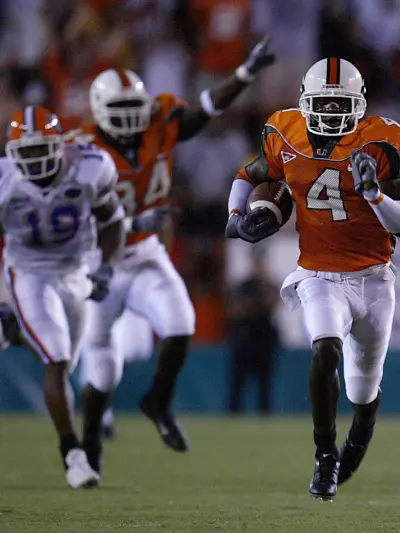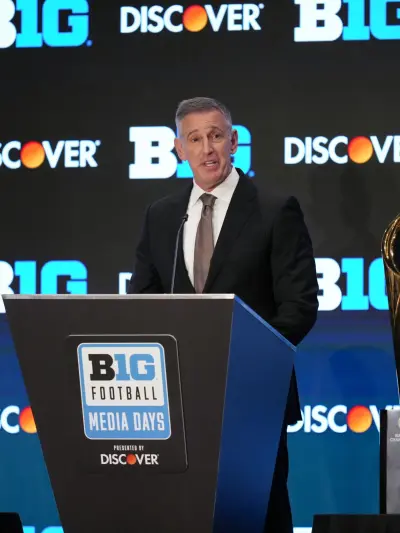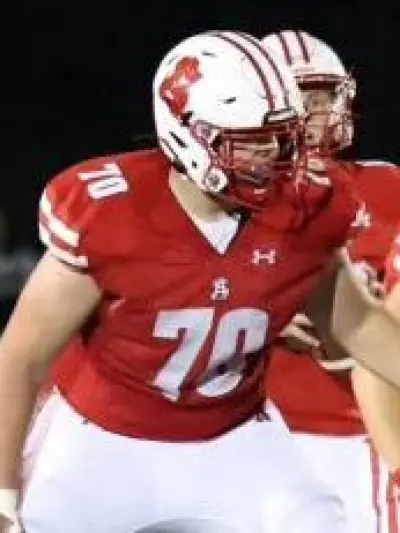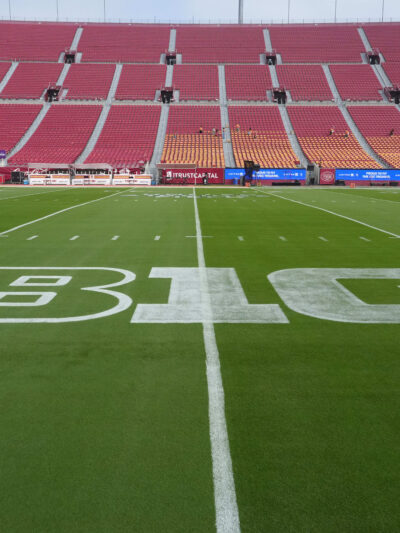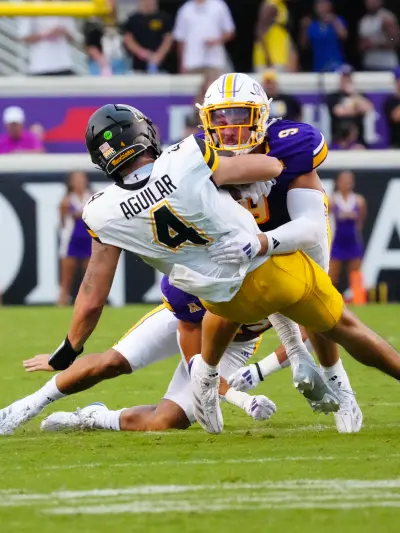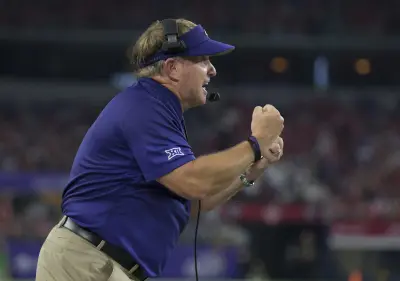
5. Gary Patterson
One of the more overlooked coaching jobs has been what Gary Patterson did for the TCU football program.
It was under Patterson’s tutelage that he revived a TCU program that was a refugee program. The Horned Frogs settled in the WAC after the demise of the old Southwest Conference in 1995 and then revived the program enough to regain Power 5 status by joining the Big XII in 2012.
The Horned Frogs returned to consistent heights they hadn’t seen since the Dutch Meyer era in Fort Worth from 1936-1952. Between the 1965 Sun Bowl — the last bowl appearance in the Abe Martin era — to when Patterson took over for a departing Dennis Franchione, who left for the Alabama coaching job, the Horned Frogs appeared in just four bowl games (winning two of them) in 35 seasons.
Patterson led the Horned Frogs to 17 bowl games, winning 11 of them, including two New Year’s Six bowl wins, and finished in the Top 10 in either poll seven times.
As the Horned Frogs’ head coach (either interim or full-time) Patterson had to navigate four different conferences: the WAC, Conference USA, Mountain West, and the Big XII. In that span, he won six conference championships in total across three conferences. The only one he didn’t win was the WAC, when he was only the interim coach.
During his time, Patterson received 21 Coach of the Year Awards either on a conference or national level from the AFCA, AP, Home Depot, Bear Bryant, Woody Hayes, Bobby Dodd, and Eddie Robinson Awards.
More Sports News
While the ending of Patterson’s time with TCU ended on a sour note, he didn’t leave a bare cupboard for his successor Sonny Dykes, who added key pieces and was able to guide TCU in his first season to the College Football Playoff National Championship Game.
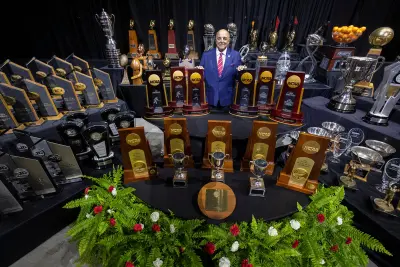
4. Barry Alvarez
Prior to Barry Alvarez’s arrival to Wisconsin in 1990, the most celebrated team in Wisconsin football history was the 1962 Wisconsin team led by head coach Milt Bruhn that went to the Rose Bowl to participate in the first No. 1 vs. No. 2 ranked teams to compete head to head in a bowl game. Wisconsin came up short that day, losing to Southern Cal 42-37 in one of the great battles in the long history of the “Grandaddy of Them All.”
The connection between that special team and Barry Alvarez was Pat Richter. Richter was a three-time letterman in three different sports (football, basketball, baseball) and a Consensus All-American on the 1962 Badgers. Richter was the Athletic Director who hired Alvarez in Madison, changing the direction of the program.
Richter knew the next coach for the fledgling football program needed to have swagger, strength, and resolve to overcome years of frustration and create a championship culture. Wisconsin, prior to Alvarez’s arrival, had won just one bowl game (1982 Independence Bowl) and had just six total bowl appearances in nearly 100 years of playing football.
Richter identified the right man, and the swagger of Alvarez was on full display in his introductory press conference, when he told the fans they better buy season tickets now because it wouldn’t be long before they won’t be able to.
Alvarez spent three seasons building the foundation, and when he completed that build, he had the complimentary pieces in place for a special 1993 squad that won the Big Ten Championship and landed Wisconsin in the Rose Bowl.
Dubbed that day as “Madison West,” the sea of red was unmistakable at the Rose Bowl. Alvarez was Wisconsin’s conductor and keyed up the big plays all day, whether it was Brent Moss who ran for 158 yards and two touchdowns or the signature play in Wisconsin history when quarterback Darrell Bevell had a 21-yard quarterback scramble for the deciding score.
Alvarez had taken a Wisconsin program that, in its previous three seasons prior to his arrival, won no more than a single conference game in a year. Three years later, the Badgers won the Rose Bowl.
The culture changed in Wisconsin under Alvarez. He would coach the Badgers to 13 bowl games and win nine. Alvarez would go on to win two more Big Ten championships in 1998 and 1999 and would become the only Big Ten coach ever to win back-to-back Rose Bowl games.
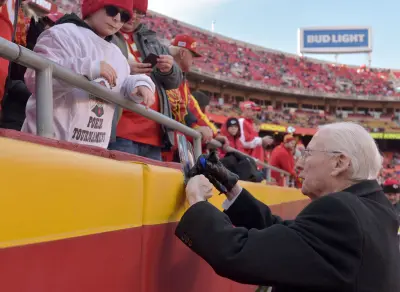
3. Bill Snyder
For all intents and purposes, Bill Snyder could be easily No. 1 on this list.
The “Miracle in Manhattan” is arguably the greatest turnaround in the history of college football and one we may not see again in our lifetimes.
In the four seasons leading up to Snyder’s arrival, Kansas State went 3-40-1. During that stretch, Kansas State lost games by an average of 25 points per game and had only two winning seasons in the previous 30.
Dubbed by Sports Illustrated as “Futility U,” the job that lay ahead for Snyder was viewed consensually impossible by peers and media as impossible. Why would someone like Snyder, who had garnered a reputation as an elite offensive coordinator for Hayden Fry at Iowa, leave for a job like Kansas State?
The turnaround was not overnight. But in his third season, Kansas State had its first winning season in a decade. Two seasons later, Kansas State returned to a bowl game since the 1982 Independence Bowl (ironically enough, against the aforementioned Wisconsin team in a rare pre-Alvarez bowl appearance).
It would start a consecutive streak of 11 bowl appearances for Kansas State, which would include four New Year’s Six bowl appearances. During that same span, Kansas State was ranked for 108 consecutive weeks, the 16th longest streak in the history of the poll, and won 11 or more games six times between 1997 and 2003.
“Bill Snyder isn’t the coach of the year, and he isn’t the coach of the decade. He’s the coach of the century,” said Hall of Fame Oklahoma coach Barry Switzer to Sports Illustrated in 1998.
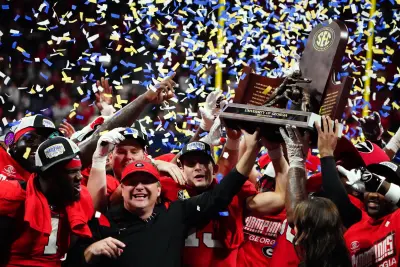
2. Kirby Smart
It is easy sometimes to be dismissive of excellence and assume it is “fait accompli” that certain jobs anyone can take over and just win at.
Fans jeered for years to Georgia faithful “1980” because the Bulldogs couldn’t win a national championship.
What most overlook in that jeer is just the sheer difficulty it is to win a national championship, especially in the hyper-competitive conference that is the SEC. Coupled with that, Georgia is one of the most fertile recruiting territories in the country, and within six hours of Georgia’s campus, you have programs such as Alabama, Auburn, Florida, Florida State, Tennessee, and Clemson, all vying for the same talent.
When Georgia dismissed Mark Richt, they rolled the dice, betting on the idea that they could upgrade from Richt. That proposition was a bit dicey.
Consider: Richt won 9 or more games in 11 of 15 seasons, participated in six SEC Championship Games winning two, and had seven seasons where Georgia finished in the Top 10 in either the AP or Coaches poll.
Between Hall of Fame coach Vince Dooley‘s retirement in 1988 and Mark Richt’s first season in 2001, the Bulldogs never finished higher than second in the SEC East Division. It was 20 seasons between Vince Dooley’s last Top 5 ranked team (1983 – No. 4) and Richt’s first Top 5 ranked team (2002 – No. 3). Georgia simply was not among the elite for two decades.
To add those expectations and then put that on a first-time head coach, it seemed improbable that Kirby Smart would deliver what Georgia desired. But he has. And he’s delivered at the highest levels.
Smart has guided Georgia to three College Football Playofff National Championship Games, and has won back-to-back national championships, the first program to do so since Alabama in 2011 and 2012.
During his first seven seasons, Smart has had 55 players selected in the NFL Draft. In contrast, Dabo Swinney (33) or Nick Saban (36) haven’t had nearly as many, and Southern Cal coach Lincoln Riley with only six seasons in, has had 36 players selected.
To say Georgia hit a home run is an understatement, as now Smart is the gold standard amongst all Georgia head coaches. And with him being only 47, he is a legitimate challenger to any and all head coaching records set before him if he continues the pace he has already set.
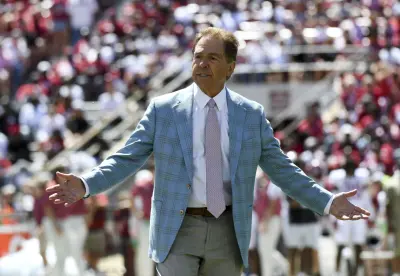
1. Nick Saban
Echoing similar sentiments from our No. 2 selection, it isn’t automatic to win anywhere. Alabama fans can tell you all about it.
The job Nick Saban has done at Alabama is one no one thought was possible when he joined the Crimson Tide in 2007.
Since the 2007 season, Alabama has lost 27 times in total. During the same stretch Alabama has won 27 different championships (six national championships, eight SEC Championships, and 13 SEC West Division Championships).
As mentioned in this article, we talked about the impossible program builders (Alvarez and Snyder), the improbable resurrection (Patterson), and the realizing of a program’s potential (Smart). But in a lot of ways, the impossible mountain Saban had to climb is the polar opposite of Bill Snyder‘s journey.
While Snyder had to create the expectation of winning from the culture that he built, Saban was a high-profile hire that was akin to The Beatles arriving at JFK for Alabama.
Additionally, the mountain Saban faced had two peaks: the ghost of Paul “Bear” Bryant and the expectation of winning national championships. Plural.
Gene Stallings’ iconic 1992 national championship team seemed like an aberration between the retirement of Bryant and the arrival of Saban. The Crimson Tide, prior to Saban’s arrival, had lost six of seven Iron Bowls to rival Auburn and had been put on a postseason ban which led Dennis Franchione to infamously bolt Alabama for Texas A&M following the 2002 season.
Saban started to meet the expectations in the 2008 season when the Crimson Tide went undefeated in the regular season and attained a No. 1 ranking. They ultimately faltered in the SEC Championship Game in a No. 1 vs. No. 2 game against Florida and, subsequently, the Sugar Bowl against Utah.
The following season, however, Alabama made their biggest statement to date, and one that ultimately showed that they were back for good. The Tide roared to a 14-0 undefeated season, winning the BCS National Championship Game in the Rose Bowl against Texas, the first for Alabama since 1992, and it avenged its No. 1 vs. No. 2 loss in the SEC Championship Game against Florida.
Since then, Alabama has competed in eight more National Championship Games, winning six of them, matching the total of the immortal “Bear” Bryant.
Saban had done the impossible; he managed to be the worthy successor of Bryant and win the accompanying championships. Now, as Saban’s career is beginning to come to a close, the question now Alabama fans will ask is, who will be the next Nick Saban?
